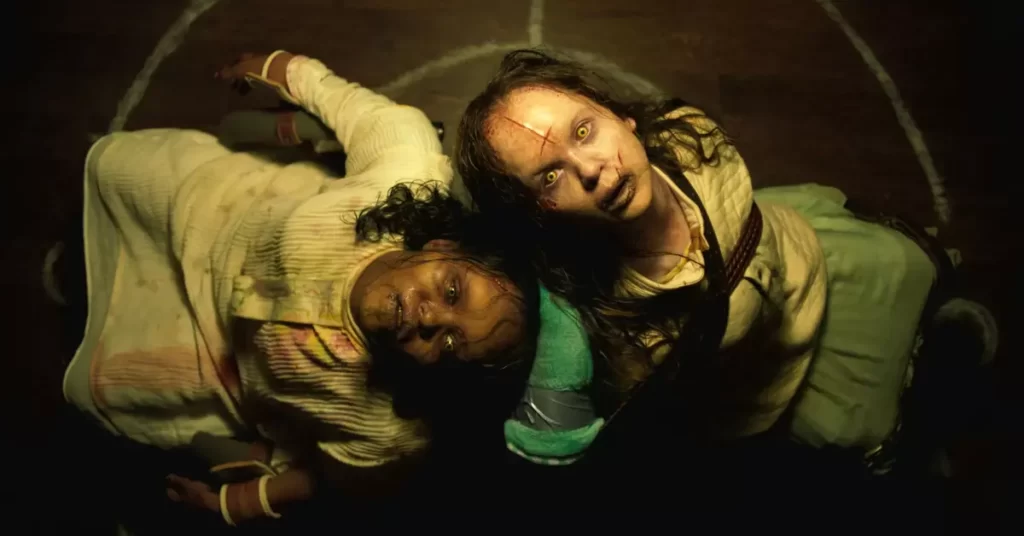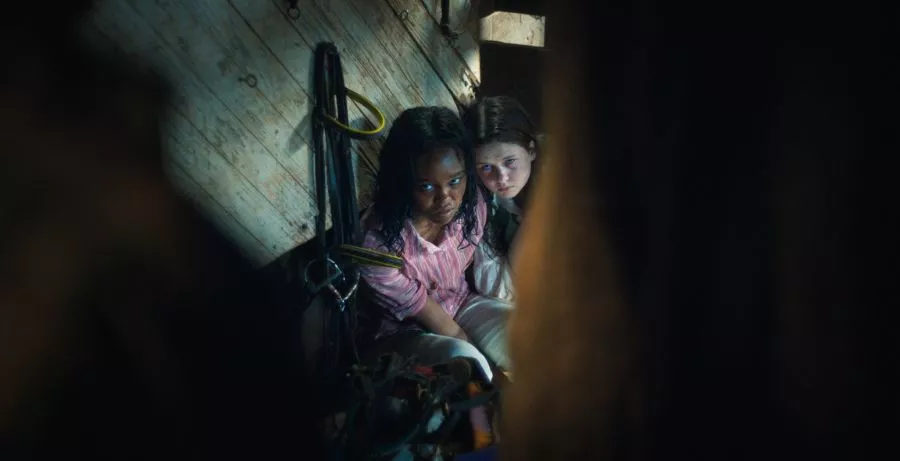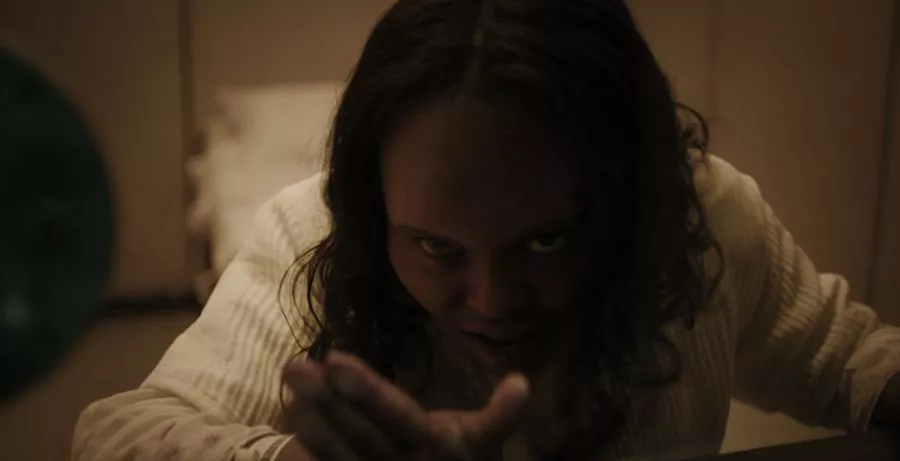“The Exorcist” is a seminal horror film that holds significant cultural influence and remains a cornerstone of the horror genre. Despite my current atheistic beliefs, my Catholic upbringing prevents me from revisiting this film. Its impact has reverberated through the decades, inspiring sequels, television series (including a non-canon sequel series worth watching for its stunning horror), and contributing to the exorcism subgenre’s development. “The Exorcist: Believer,” directed by David Gordon Green, features a screenplay by Green and Peter Sattler, with a story by Scott Teems, Danny McBride, and Green. This new installment serves as a direct sequel to the original film, with returning cast members.

“The Exorcist: Believer” centers around Victor Fielding, portrayed by Leslie Odom Jr., a man who tragically lost his pregnant wife in a Haitian earthquake 12 years ago. Since that devastating event and the miraculous survival of his daughter Angela, played by Lidya Jewett, Victor has been dedicated to being a loving and attentive father to her. However, when Angela and her friend Katherine, portrayed by Olivia Marcum, mysteriously disappear in the woods and return three days later with no memory of their ordeal, a series of unsettling events is set in motion. Victor is forced to confront an evil presence, and in his fear and desperation, he seeks the help of Chris MacNeil, portrayed by Ellen Burstyn, the only person who knows how to deal with this malevolent force.
“The Exorcist: Believer” establishes a compelling premise with a strong foundation. The film revolves around two friends who become possessed after dabbling with supernatural forces beyond their comprehension. Angela, portrayed by Lidya Jewett, is shown grappling with her mother’s memory, finding solace in items like a scarf she discovers among her father’s belongings. Additionally, Angela and her friend Katherine engage in mysterious activities with a pendulum, inadvertently conjuring something beyond their understanding. The movie benefits from a talented duo at its core, with Leslie Odom Jr. and Lidya Jewett delivering standout performances as the father-daughter pair.
The genuine and authentic connection between the father-daughter duo in “The Exorcist: Believer” is a standout aspect of the film. Their interactions, which range from teasing to caring for each other, feel entirely believable. This dynamic draws viewers in and makes them emotionally invested in the characters’ fear and survival. The film’s central concept, which brings together two families who were previously strangers, is also compelling. Moreover, the movie emphasizes the importance of forming a community to face challenges together rather than enduring suffering in isolation. While the film has a promising foundation, its execution leaves much to be desired.
The characters of Katherine and Angela, portrayed by a pair of talented young actresses, are indeed unsettling in “The Exorcist: Believer.” These performers demonstrate a remarkable ability to convey the eerie and possessed nature of their characters. Their control over eye movement, facial expressions, and body language adds depth to their portrayals, showcasing their awareness of their characters’ states at any given moment. However, it’s a missed opportunity that these talented actresses didn’t have more to do in the film beyond being tied together, as they clearly have the potential for a promising future in the horror genre.

“The Exorcist: Believer” appears to struggle under the immense legacy of the original film, “The Exorcist.” The inclusion of Chris and Regan MacNeil from the original movie feels forced and creates a sense of nostalgia for the past within a film that could have potentially stood on its own with a unique narrative and identity. Additionally, the nods to the original film’s iconic moments don’t deliver the expected dread, transgressive quality, or impact in execution, unlike the original scenes that left a lasting mark on audiences. This suggests that the sequel may not live up to the standards set by its predecessor in terms of its homage and execution of iconic moments.
“The Exorcist: Believer” appears to be hindered by its connection to the original film and the unnecessary inclusion of iconic characters like Chris and Regan MacNeil. The film’s potential shines through when it tells its own story, particularly in moments such as the double exorcism and the father-daughter bond. However, the film’s reliance on the IP and attempts to connect to the original film weigh it down.
ALSO READ: Discovering the 7 Best Vampire Movies and TV Shows – Delving Deep into the Timeless Allure of Vampires, Exploring Themes from Love Triangles to Immortality and Iconic Legacies
The horror experienced by the girls could have been more effectively explored as a result of their adolescent curiosity rather than as a means to reference a Regan who never appears and to introduce Chris MacNeil as a mere prop in the narrative. The film’s focus on connecting to its iconic predecessor should have been redirected towards developing the depth of the characters on screen. Viewers are left with unanswered questions about characters like Katherine and her father, which diminishes the impact of their double possession and Mr. Fielding’s heroic act of saving Angela from a demon.

“The Exorcist: Believer” needed more time to stand on its own, separate from its legendary predecessor. The film could have been successful in telling a communal story if it had the opportunity to develop its characters and narrative independently. However, its connection to the MacNeils and superficial nods to the original undercut any larger themes it attempts to explore.
Despite some well-timed jump scares, “The Exorcist: Believer” lacks the grotesque and brutal nature of the original film. The expectation of aggression due to the connection to Regan is never fully realized on screen, and the film often feels like it’s building up to something impactful but then shying away before delivering a substantial blow.
“The Exorcist: Believer” finds success in its adaptation of the parable of King Solomon, offering a unique take on the story. Leslie Odom Jr.’s portrayal of Victor Fielding strikes a balance between a father who cares deeply for his daughter and a man haunted by his past actions. The film explores the weight of love and the pain of loss, particularly in Victor’s character, whose complex emotions add depth to the narrative.
ALSO READ: Powerful Film ‘We Grown Now’ to Ignite Hearts as Sony Pictures Secures Its Release
However, the film could have benefited from more time spent on the two families navigating the traumatic events and further developing the themes it touches upon. Despite some repetitive flashbacks, Odom Jr.’s performance as Mr. Fielding adds depth and tension to the story, particularly in moments that delve into his character’s insecurities and guilt.
“The Exorcist: Believer” excels in its portrayal of personal moments, emphasizing the twisted truth of events and their most devastating aspects. However, the film falls short in its treatment of Katherine’s character, who ends up feeling like a mere prop in the context of the double exorcism. The movie shines in its exploration of relationships, but this discrepancy in character development stands out prominently.
The use of faith in “The Exorcist: Believer” is somewhat one-note, despite the film’s title emphasizing the concept of belief. Despite the various mentions of exorcisms across different cultures and religions, the movie ultimately defaults to a Christian perspective. Whether it’s Katherine and her family’s evangelical Christian church, the neighbor’s Catholicism, another neighbor’s unnamed charismatic Christianity (likely Pentecostal), or even the Root Work as an example of Black folk religion and spirituality, all paths in the film seem to lead back to a Christian god. This limited perspective may limit the film’s exploration of faith and spirituality.
“The Exorcist: Believer” could have explored a more diverse range of religious and spiritual beliefs, especially considering its initial depiction of Yoruba and Haitian Vodou practices. The film could have delved deeper into the beliefs and gods associated with these religions, particularly given the central role of Haiti in the story. However, it seems to have limited its exploration of exorcism to Christian perspectives while missing an opportunity to detach exorcism from Catholicism and explore a broader range of spiritual practices. This decision may have limited the film’s ability to fully explore the theme of faith and spirituality in different cultural contexts.
“The Exorcist: Believer” is described as a film with potential that falls short of fully realizing its possibilities. It is considered neither bad nor exceptionally good, offering a serviceable viewing experience for Halloween. The frustration lies in its untapped potential, which may be hindered by its attachment to the iconic IP and the missed opportunities to explore deeper themes and character development. While it may provide some quick scares in line with the genre, it leaves room for improvement and may not fully satisfy those seeking a more substantial horror experience.
“The Exorcist: Believer” is characterized as a film stuck in an in-between stage, neither flesh nor rotten. It carries the weight of its franchise attachment and is described as being “almost” in various aspects, from its scares to its thematic depth. The film is seen as falling short of fully realizing its potential and leaves viewers with a sense of it being stuck in the middle.









